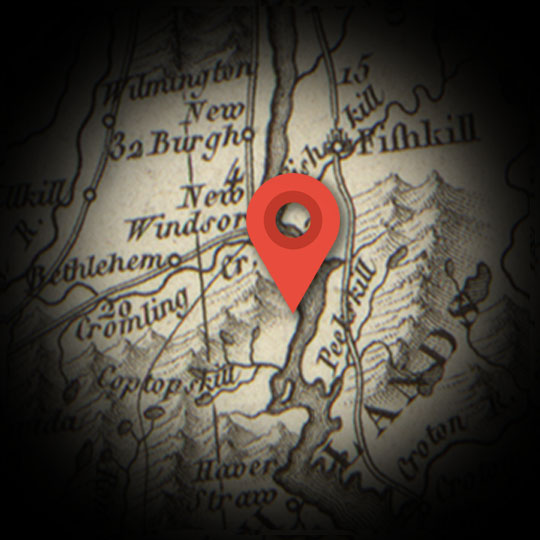WEST POINT
Explore
The location of the celebrated U.S. Army Academy on the Hudson River began its life as a fort at this strategic point in a crucial waterway corridor linking upstate New York, New England, and inland Canada from the sea.
Alexander Hamilton began coming to West Point beginning in the fall of 1779, when George Washington employed the fort as his headquarters. He held an important meeting there with French ally the Chevalier de la Luzerne on September 16th that year.
But it would be in 1780 that the most memorable event in Hamilton’s life to take place at West Point played out.
Notorious traitor to the American cause, General Benedict Arnold, had been put in charge of the fort. Alexander Hamilton was returning to the location, along with his commanding officer George Washington, to inspect it in September, 1780.
Arnold and his wife, Peggy Shippen, were inhabiting a house on the West Point grounds. For some months, the couple—always ambitious and hungry for accolades and cash—had been secretly cooperating with the British.
Their spy work was being conducted through a well-born and handsome go-between, the British Major John Andre.
The threesome’s scheme seems to have been for the Arnolds to surrender West Point to the British. This would have major implications for the rest of the war, and further stymie George Washington’s stated goal of retaking New York City and ejecting its British occupiers.
The Arnolds’ plot began to unravel just as Hamilton and Washington and his entourage arrived at West Point on September 25th. Shocked and dismayed at the revelations about Arnold, Hamilton was even more unmanned to discover that Arnold had successfully escaped downriver, aboard a British ship. The traitor would be safely taken behind enemy lines in Manhattan. Arnold would lead British troops and American loyalists against the patriots for much of the rest of the war, notably in Connecticut and in Virginia.
Peggy Shippen was not so lucky, however, and was taken into custody at West Point. Hamilton witnessed Peggy raving like someone in the grip of extreme mental illness for hours that night—probably a ploy to mitigate the trouble she was in. Peggy was sent home to her family in New Jersey and faced no lasting consequences for her part in the plot.

TIME FRAME:
1779-1780
